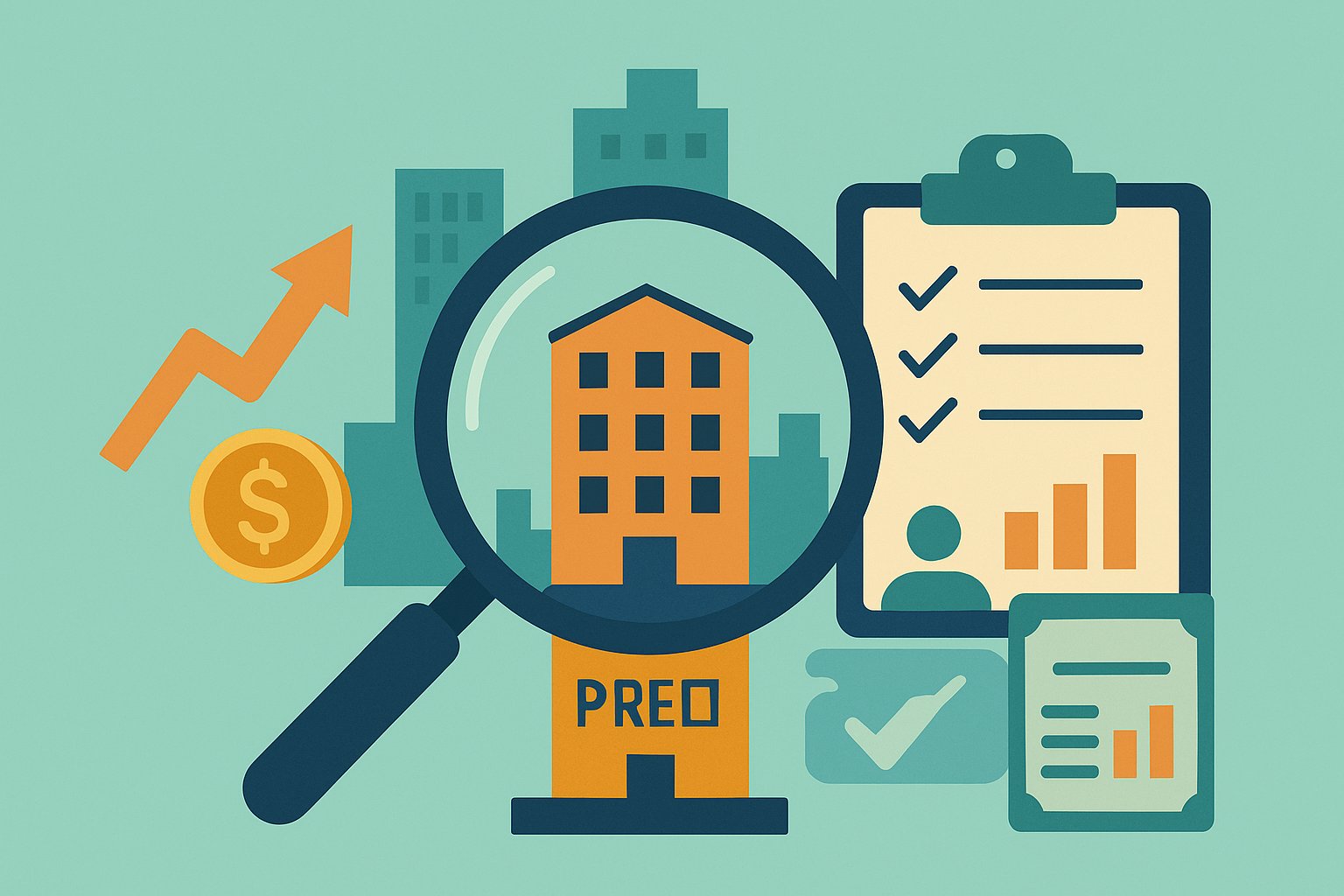Setting the Stage: Why Rigorous Evaluation Matters
Commercial real estate (CRE) crowdfunding has opened the door for individual investors to participate in large-scale property deals once reserved for institutions. Yet with opportunity comes responsibility: not all offerings deliver on their promises, and underwriting standards can vary dramatically between platforms and sponsors. Developing a structured evaluation framework ensures that you separate high-quality investments from speculative pitches. By systematically assessing factors such as sponsor experience, market fundamentals, deal structure, and risk mitigants, you can build a portfolio of CRE opportunities that aligns with your return goals and risk tolerance.
Decoding Sponsor Credentials and Track Records
At the heart of every successful CRE crowdfunding deal lies an experienced sponsor or sponsor team. These are the developers, asset managers, and capital raisers who source deals, negotiate financing, and execute business plans. Start by examining each sponsor’s history: How many deals have they closed? What asset types have they managed—office towers, industrial parks, retail centers, or multifamily communities? Look for transparent disclosures of past project performance, including actual return metrics and lessons learned from underperforming assets. A sponsor who openly discusses challenges alongside successes demonstrates credibility and a commitment to continuous improvement. When possible, seek independent third-party verifications of sponsor track records such as audit reports or appraisals to validate performance claims.
Peering into the Numbers: Underwriting and Financial Projections
The cornerstone of any strong CRE investment is sound underwriting. Sponsors should provide detailed pro forma models outlining projected rental income, operating expenses, debt service, and eventual sale proceeds. Scrutinize assumptions for vacancy rates, rent growth, and renovation costs—are they conservative relative to historical market data? Sensitivity analyses that show returns under varying scenarios (e.g., slower leasing velocity or rising interest rates) reveal how robust the deal is against real-world fluctuations. Pay close attention to the debt service coverage ratio (DSCR) and loan-to-value (LTV) limits, which indicate how comfortably cash flows can cover financing costs and how much equity cushion exists if valuations decline. High-quality offerings include third-party market studies and independent appraisals to back up underwriting assumptions.
Unraveling the Capital Stack and Return Waterfall
Understanding where you sit in the deal’s capital stack is pivotal. Senior debt tranches carry first-lien priority and typically offer lower interest rates but higher security, while mezzanine debt or preferred equity layers sit beneath senior loans and deliver enhanced yields in exchange for increased risk. Common equity investors absorb the highest volatility but also capture the largest share of upside upon exit. Examine the distribution waterfall—the sequence in which cash flows are allocated among debt holders, preferred equity, and common equity. Look for clear hurdle rates and promote structures that align sponsor incentives with yours. A transparent, well-defined waterfall ensures you know precisely how and when you’ll receive interest, dividends, or profit splits.
Sizing Up Market Fundamentals and Location Dynamics
Even the most impeccably underwritten deal can falter if market fundamentals deteriorate. Evaluate macro trends such as employment growth, migration patterns, and sector-specific demand drivers—think e-commerce growth for industrial logistics or urban population inflow for multifamily rentals. Drill down to micro-level factors: neighborhood walkability, local zoning changes, pipeline supply, and competitive properties coming online. Platforms that supply comprehensive market research reports, as well as sponsor-led site visits and video walkthroughs, can bolster your confidence in location analysis. A deal backed by strong demographic tailwinds and limited near-term competition stands a far better chance of delivering projected cash flows and valuation gains.
Stress Testing Risk: Protections and Mitigation Features
Commercial real estate carries inherent risks—construction delays, cost overruns, tenant turnover, and broader economic slowdowns. Top-tier CRE crowdfunding platforms mitigate these through various structural features. For debt offerings, seek covenants such as mandatory interest reserves, cash traps, and debt service coverage triggers that force early repayment or equity injections if performance dips. Equity deals may include rent guarantees from sponsors or minimum occupancy thresholds tied to hurdle rates. Additionally, verify the presence of adequate insurance coverage, environmental liabilities assessments, and contingency funds for unforeseen expenses. By ensuring these safeguards are in place, you reduce downside exposure and enhance the resilience of your investment.
Fee Transparency: Calculating the True Cost of Entry
Fees may seem innocuous at first glance, but over the life of a CRE investment they can materially erode net returns. Common charges include acquisition fees, asset management fees, disposition fees, and ongoing platform servicing costs. Some sponsors also levy refinancing or promote fees when returns exceed predefined thresholds. To gauge the true cost of participation, request a detailed fee schedule and calculate the total expense ratio as a percentage of capital deployed. Compare this to similar offerings on competing platforms. A slightly higher fee can be justified by superior underwriting or sponsor expertise—but only if that value is demonstrable. Transparency around fee mechanics, frequency, and cap amounts is non-negotiable for prudent investors.
Liquidity Profiles and Exit Strategies
Unlike publicly traded REITs, most CRE crowdfunding deals lock up capital for defined hold periods—typically three to seven years. However, exit strategies can vary: some sponsors plan for a sale to a long-term owner, others intend a refinance to return equity earlier, and a few may seek a partial sale of interest via a secondary platform. Understand whether the offering includes early repayment options or redemption rights, and at what conditions these can be exercised. If liquidity is paramount, target deals with scheduled loan amortization or flexible equity redemption windows. Conversely, if you can commit capital for the full hold period, ensure the sale or refinance assumptions are grounded in realistic market exit multiples and investor demand.
Regulatory and Legal Checkpoints
Commercial real estate crowdfunding is regulated under securities laws such as Regulation D, Regulation A+, or Rule 506(c)—each with different disclosure requirements and investor eligibility standards. Review offering memoranda and subscription agreements for clarity on investor rights, default remedies, and conflict-of-interest policies. Pay particular attention to cross-default clauses, force-majeure provisions, and amendment thresholds that dictate how much investor consent is needed for structural changes. Some platforms provide access to outside counsel summaries or annotated legal documents, which can demystify complex clauses. When in doubt, engage a real estate attorney or securities advisor to parse critical legal language that could impact your capital recovery in worst-case scenarios.
Tech-Driven Conveniences: Platforms That Elevate Transparency
Leading CRE crowdfunding platforms leverage technology to improve deal visibility and investor engagement. Look for user dashboards that update in real time with rent roll shifts, expense variances, and occupancy metrics. Platforms incorporating blockchain tokenization can offer more seamless transferability and transparent auditing of share ownership. Interactive site maps, drone footage, and virtual tours deepen your understanding of asset conditions. Additionally, advanced analytics tools that model market correlations or stress-test your entire portfolio across multiple deals amplify decision-making. When evaluating opportunities, favor platforms that combine rigorous underwriting with intuitive, data-rich interfaces that keep you informed and confident throughout the investment lifecycle.
Crafting a Diversified CRE Crowdfunding Portfolio
No single deal can fully insulate you from market cycles or idiosyncratic risk. Diversification across property types—such as office, retail, industrial, and multifamily—and geographical markets helps balance performance drivers. Equally important is diversity in capital stack exposure: blending senior debt holdings with select equity plays enables you to fine-tune overall portfolio volatility and yield. Many platforms offer model portfolios or automated investment vehicles that allocate your capital across dozens of curated opportunities, simplifying diversification for newcomers. As you accumulate experience, you can layer in direct deal selection to capitalize on niche trends or sponsor specialties that complement your broader allocation strategy.
Elevating Your Investment Acumen
Evaluating commercial real estate crowdfunding opportunities demands a holistic approach—one that synthesizes sponsor credentials, rigorous underwriting, market intelligence, structural safeguards, fee scrutiny, liquidity planning, and technological transparency. By developing a repeatable due diligence process, you position yourself to identify standout offerings that deliver consistent cash flows, attractive return potential, and resilient risk profiles. Whether you aspire to anchor your income portfolio with stabilized debt deals or chase higher upside through equity ventures, mastering these evaluation pillars empowers you to navigate the CRE crowdfunding landscape with confidence and precision. As you apply these principles, you’ll not only safeguard your capital but also harness the democratizing power of crowdfunding to build a diversified, future-ready real estate portfolio.




